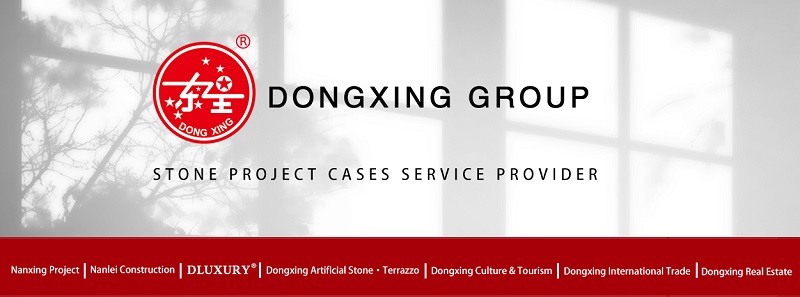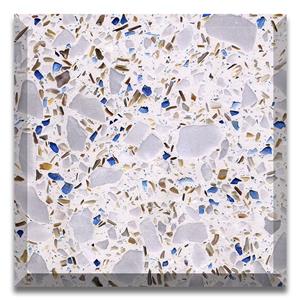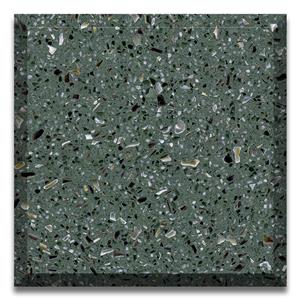What is Terrazzo Flooring? A Complete Guide for Modern Spaces

If you have visited an airport, hotel lobby, or a modern office, you have probably walked on terrazzo flooring without noticing it. Renowned for its durability, variety, and timeless elegance, terrazzo has become a popular choice for both residential and commercial flooring projects. But what exactly is terrazzo flooring? How is it installed, and why has it made such a strong comeback in contemporary design?
This article explores the history, composition, benefits, and terrazzo flooring installation process to give you a clear understanding of why terrazzo continues to be a go-to surface material worldwide.

What is Terrazzo Flooring?
At its core, terrazzo flooring is a composite material made by combining chips of marble, quartz, granite, glass, or other aggregates with a cementitious or epoxy binder. After workers pour the mixture or precast it into panels, they cure, grind, and polish it to create a smooth surface that displays a mosaic-like appearance.
The result is a highly durable, low-maintenance surface with endless design possibilities. By choosing the color, pattern, and aggregate size, installers can customize terrazzo, making it ideal for both simple and artistic interior designs.
A Brief History of Terrazzo
The story of terrazzo dates back to ancient times. Ancient craftsmen produced early terrazzo forms in Egyptian mosaics and Roman floors.
However, terrazzo in its familiar form developed in 15th-century Venice, Italy. Venetian construction workers discovered that leftover marble chips from luxury projects could be reused by embedding them in clay and polishing the surface. This method created beautiful and cost-effective floors for their own homes.
Fast-forward to today, terrazzo has evolved into an advanced commercial flooring material, favored in airports, hospitals, schools, and upscale homes for its strength, eco-friendliness, and aesthetic value.
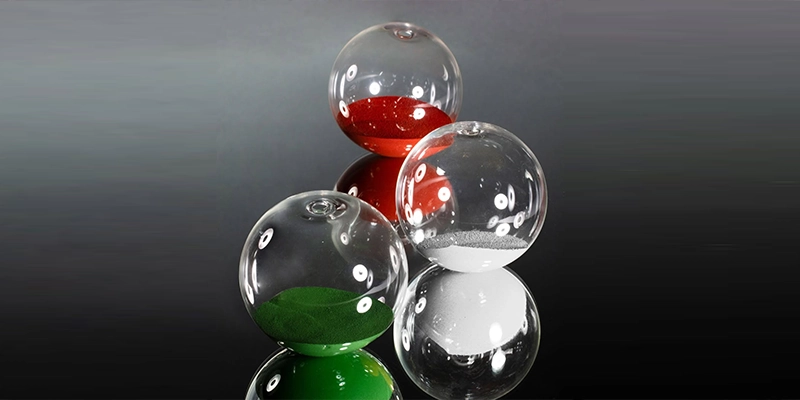
Key Components of a Terrazzo Floor
A terrazzo floor typically consists of the following elements:
Aggregate: Marble, quartz, granite, glass, or other decorative chips.
Binder: Either cement-based or epoxy-based, which holds the aggregate together.
Divider Strips: Metal strips used to create patterns, control joints, and prevent cracking.
Polish and Sealer: After grinding, the floor is polished and sealed to enhance durability and appearance.
The beauty of terrazzo lies in its flexibility—designers can select aggregate colors and binders to create unique, custom looks.
Types of Terrazzo Flooring
Cementitious Terrazzo
Made with cement as a binder.
Extremely durable and ideal for outdoor or large-scale projects.
Requires longer curing times.
Epoxy Terrazzo
Uses epoxy resin as a binder.
This approach results in a lighter, thinner flooring layer, simplifying indoor installation.
Allows for brighter colors and more intricate designs.
Best suited for indoor applications.
Both options offer long-lasting performance, but the choice often depends on the project’s design goals and location.
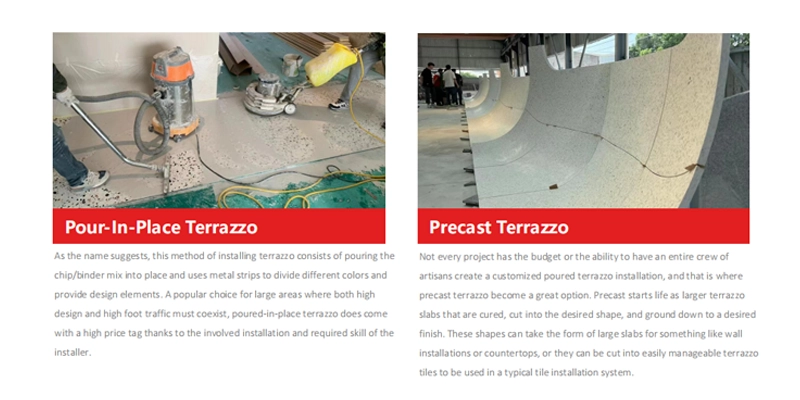
Terrazzo Flooring Installation Process
Installing terrazzo is a skilled process that requires precision. Here’s a simplified breakdown:
Surface Preparation
The substrate (usually concrete) must be clean, dry, and level.
Cracks are repaired, and moisture is tested.
Divider Strip Placement
Metal strips are installed to control cracking and create patterns.
Mixing and Pouring
The chosen aggregate is mixed with the binder (cement or epoxy).
The mixture is poured onto the substrate.
Curing
Cementitious terrazzo may take several days to cure.
Epoxy terrazzo cures faster.
Grinding and Polishing
Heavy-duty grinders smooth the surface, revealing the aggregate.
Polishing continues until the desired sheen is achieved.
Sealing
A protective sealer is applied to enhance stain resistance and durability.
Professional installation is highly recommended, especially for large commercial flooring projects, since terrazzo requires specialized tools and techniques.
Benefits of Terrazzo Flooring
Why choose terrazzo over other flooring materials? Here are the top advantages:
1. DurabilityTerrazzo is one of the toughest flooring options available. Properly installed and maintained, a terrazzo floor can last for decades—even up to 75 years or more.
2. Design FlexibilityWith virtually unlimited color and aggregate choices, terrazzo offers unmatched making it your own. Whether you want sleek modern basic style or vibrant artistic patterns, terrazzo delivers.
3. Low MaintenanceOnce sealed, terrazzo resists stains and moisture. Routine cleaning usually requires only sweeping and damp mopping.
4. Eco-FriendlyTerrazzo often incorporates recycled glass, metal, and stone, making it a sustainable choice for environmentally conscious projects.
5. Cost Efficiency Over TimeWhile the upfront terrazzo flooring installation cost may be higher than vinyl or carpet, its long lifespan and minimal maintenance make it cost-effective in the long run.
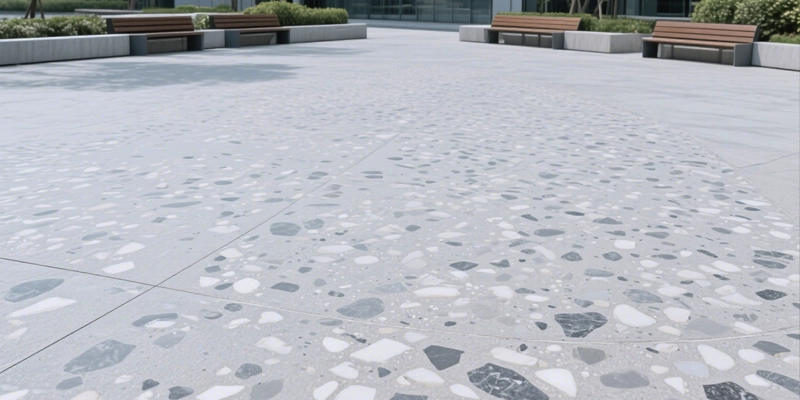
Common Applications
Terrazzo is widely used in:
Commercial flooring: Airports, schools, hospitals, shopping centers, office lobbies.
Residential projects: Kitchens, bathrooms, entryways, and even outdoor patios.
Public spaces: Museums, galleries, and government buildings.
Its ability to withstand heavy foot traffic without losing its aesthetic appeal makes terrazzo especially popular in public and commercial settings.
Maintenance Tips for Terrazzo Flooring
To keep terrazzo looking its best, follow these tips:
Sweep or vacuum regularly to prevent grit from scratching the surface.
Mop with a neutral pH cleaner—avoid harsh chemicals.
Reseal every few years depending on traffic levels.
Place mats at entrances to reduce dirt collection.
With proper care, your terrazzo floor will retain its shine for decades.
Challenges and Considerations
Despite its many advantages, terrazzo does come with a few challenges:
Higher initial cost compared to traditional flooring options.
Professional installation is required because of its complexity.
Slippery when wet unless treated with a non-slip additive.
Repair difficulty if damage occurs, as color-matching can be challenging.
Being aware of these factors helps ensure terrazzo is the right choice for your space.
Conclusion
So,what is terrazzo flooring? Terrazzo floor is a centuries-old yet modern surface solution that combines durability, eco-friendliness, and limitless design potential. From its Venetian origins to today's cutting-edge terrazzo flooring installation techniques, terrazzo remains one of the most versatile and long-lasting options for commercial flooringand residential spaces alike.
Whether you're renovating a chic apartment or planning a high-traffic public building, terrazzo offers both
beauty and performance that stand the test of time. Investing in terrazzo means investing in a floor that is not
just functional, but a piece of art under your feet.
